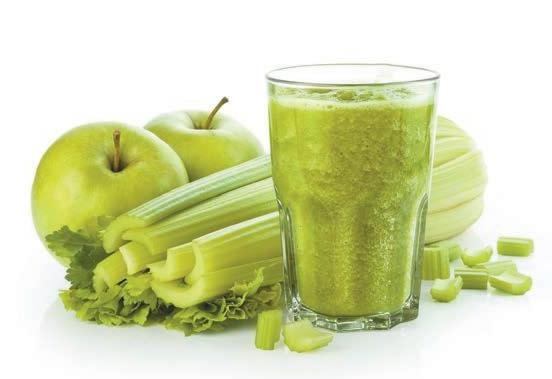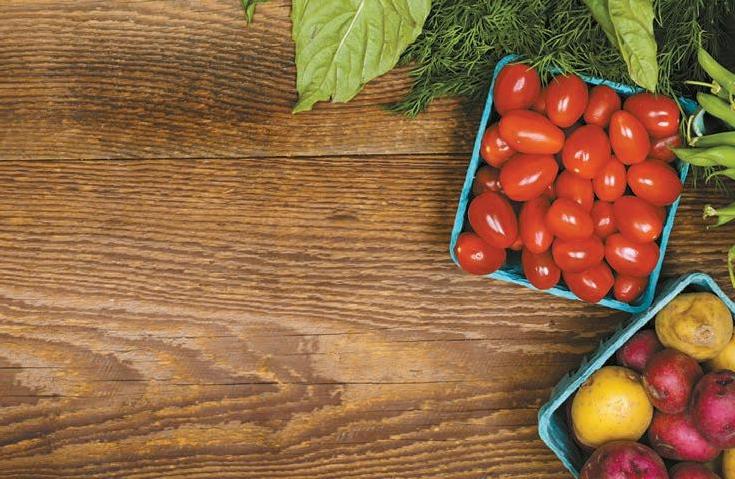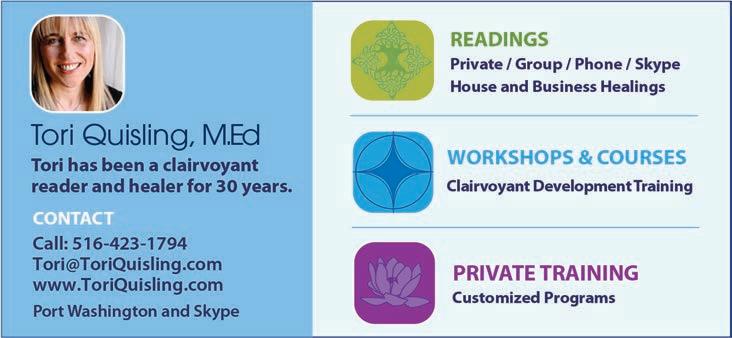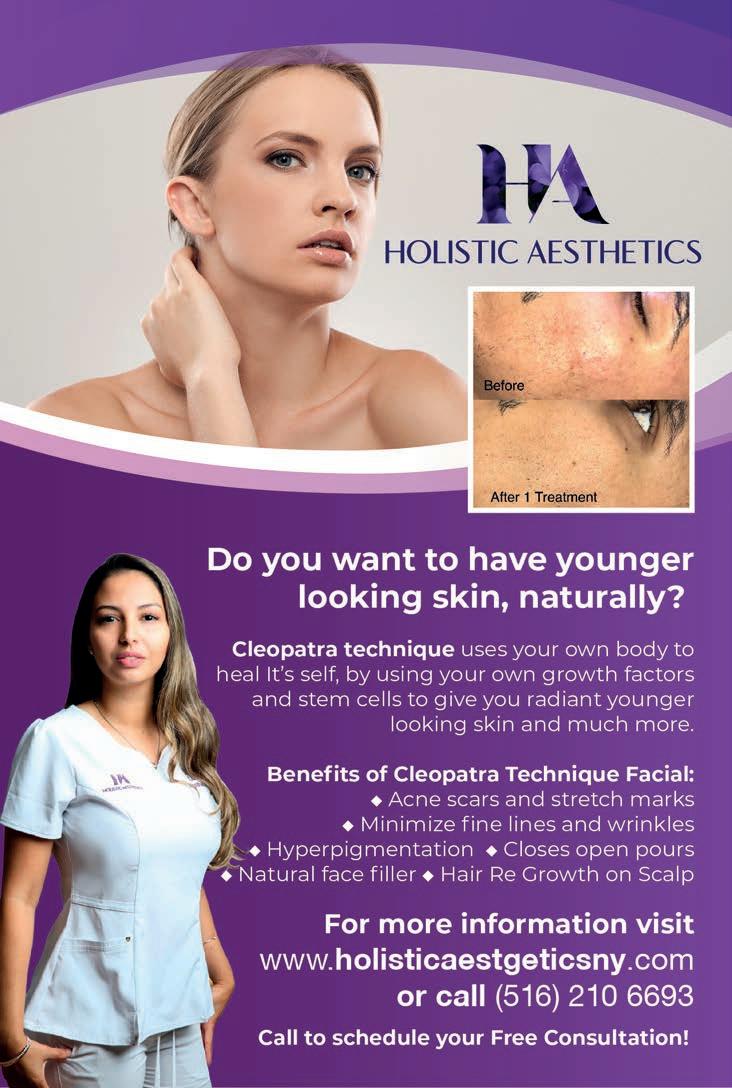
8 minute read
healing ways
NATURAL ANTIVIRALS
Help in Staying Strong and Healthy
Advertisement
by Ronica O’Hara
In these sobering times, we must use every weapon in our arsenal against invasive viruses, including often-overlooked natural remedies with antiviral properties. As is also the case with pharmaceutical agents, natural approaches have not been shown to stop an aggressive virus in its tracks, but they may ameliorate symptoms. “Nutrition and supplementation are unlikely to prevent an infection, but they may help prevent the infection from becoming symptomatic or severe,” explains Leo Galland, M.D., a global leader in functional medicine and author of Power Healing: Use the New Integrated Medicine to Heal Yourself . Eating healthy foods, sleeping seven to nine hours a night and exercising at least 150 minutes a week are also key in fortifying our natural defenses against viruses. Steps still necessary for COVID-19 protection include hand-washing, mask-wearing, social distancing and sterilizing objects and surfaces.
BASELINE PROTECTORS
samael334/AdobeStock.com Scientists report that some vitamin and mineral deficiencies appear to be linked to poor COVID-19 outcomes, while adequate levels help combat other viruses. ConsumerLab.com, which provides comprehensive research overviews and information on nutritional products, lists these natural supplements as potential aids against COVID-19, although at this early stage, none have been proven to work: Vitamin D: According to Galland, vitamin D “stimulates your immune system to produce factors called defensins and cathelicidins that kill viruses.” People with levels below 30 nanograms per milliliter (ng/mL) were 45 percent more likely to test positive for the coronavirus and 95 percent more likely to be hospitalized, Israeli researchers found. Getting three 30-minute sessions of sun exposure a week and eating D-fortified foods raise levels, and supplementing with up to 2,000 international units daily is generally considered safe.
Zinc: “Zinc throws a wrench in the viral replication machine and helps fight infections by boosting the production of antibodies,” says Nicole DeMasi, an integrative dietitian nutritionist in Los Angeles. Zinc lozenges may ward off the coronavirus in the upper respiratory tract. The recommended dosage is 15 to 30 milligrams (mg) a day for up to two weeks. Vitamin C: A cup of orange juice, tomato juice or a kiwi supplies most of the minimum recommended intake of vitamin C, a vital supplement for white blood cells that fight viral infections. Supplementing with 1,000 mg daily is also safe. Intravenous megadoses are being studied for critically ill COVID-19 patients, but no evidence exists so far that higher levels prevent infections, reports ConsumerLab.com. Potassium: A critical antiviral mineral and electrolyte, low levels of potassium were found in 61 percent of 175 Chinese patients hospitalized with COVID-19, making them more prone to heart damage, reports the Journal of the American Medical Association. Foods that boost levels include potatoes, squash, lentils, spinach, avocados, bananas and raisins.
SUPPLEMENTAL SUPPORTERS When choosing supplements proven to be effective, “Much of what we know and can apply is based on our previous research on viruses of the past,” says Monisha Bhanote, M.D., an integrative physician in Jacksonville Beach, Florida. Here are some good choices. Melatonin: Known best as the hormone that regulates sleep, melatonin also supports antiviral immunity and helps control inflammation in viral infections. A study of 11,672 people tested for COVID-19 found that those taking supplemental melatonin were less likely to test positive, and a clinical study is underway to see if 2 mg a day helps protect healthcare workers. Typical dosages range from 0.3 to 3 mg. Licorice Root Extract: This herb contains a substance called glycyrrhizin that makes it hard for a virus to attach to and invade a cell and hinders its ability to replicate, slowing the spread from one cell to another. Chinese doctors used it with other traditional herbs to combat COVID-19, and studies have shown it effective against an earlier coronavirus, as well as against HIV, herpes, viral hepatitis and respiratory infections. For dosage, follow package directions. People with high blood pressure, congestive heart failure, kidney disease or low potassium levels are advised against its use. Astragalus: Known as huang qi, astragalus “is one of the most powerful herbs used in Chinese medicine for people with weakened immune systems,” says Tsao-Lin Moy, a New York City acupuncturist and herbalist. It’s best taken as a hot or cold tea using tea bags or the root itself. Andrographis: This herb has long been used for colds and throat infections in China and India, and may prevent flu viruses from binding to cells. In a Swedish study, flu patients that took an andrographis extract along with Siberian ginseng recovered more quickly with fewer complications than those given a U.S. Food and Drug Administrationapproved flu medication. Because of its potency, it’s best to consult a health practitioner to avoid interactions. The recommended dosage is 400 mg twice a day.
FIGHTIN’ FOODS To lower the inflammation linked to poor viral outcomes, integrative physician Monisha Bhanote, M.D., recommends a predominantly whole foods diet with at least five to seven servings of vegetables and two to three servings of fruit a day. Quercetin-rich foods, such as apples, onions, broccoli, raspberries, parsley and celery are especially important, she says, because the bioflavonoid enhances zinc’s antiviral actions: “It functions as a zinc ionophore, chelating zinc and transporting it into the cell cytoplasm.” Quercetin can also be taken as a supplement in doses ranging between 500 and 1,000 mg daily.

Garlic has potent antiviral and antibacterial properties, and can be cooked into food, eaten raw in salads and dressings or obtained from capsules of allicin, the active component. Green tea has epigallocatechin gallate, a compound with “a wide range of antiviral activity, especially in the early stages of infection, by preventing viral attachment and envitals/AdobeStock.com try into the cell,” says Bhanote. Aim for three to five cups a day.
Ronica O’Hara is a Denver-based health writer. Connect at OHaraRonica@gmail.com.


FIND US AT THE FOLLOWING LOCATIONS • Chelsea • 3rd/87th • Columbus/97th • Columbus Circle • Union Square • East Houston • Btw 2nd/3rd/57th
Yoga for Every Body Adaptive Ways Ease Pain and Immobility
by Marlaina Donato
Taming chronic pain, restoring energy reserves, improving heart health and relieving symptoms of depression and anxiety are only a few of the science-backed perks of spending time on a yoga mat. However, misconceptions about this ancient practice can make yoga seem intimidating for individuals that could benefit the most from it. Adaptive yoga, designed for people challenged by injury, chronic pain, autoimmune disease or debilitating conditions like multiple sclerosis, can foster perhaps unexpected gains through the use of props, chairs, wall space and even countertops. From wheelchairbound veterans to seniors with compromised balance, adaptive yoga offers new horizons for achieving well-being. Yoga’s gentle influence goes beyond physical benefits. A 2017 British study published in the Journal of Pain Research found people with spinal cord injuries that took sitting yoga classes twice a week for six weeks were less depressed, more self-compassionate and more mindfully in the moment than those in a control group.
EMPOWERMENT, NOT PERFECTION “Yoga is for any body, no matter the size, shape or color. It’s not about designer clothing, athletic ability, talents or perfection in the pose. Adaptive yoga is a movement to change this misconception and mitigate the anxiety to try yoga,” says Mindy Eisenberg, a Detroit-area certified yoga therapist and author of Adaptive Yoga Moves Any Body: Created for Individuals with MS and Neuromuscular Condition and the accompanying Adaptive Yoga Cards. For Eisenberg, the focus is about the internal experience, healing and most of all, “the sense of joy that comes from a regular practice.” Ora Ramat, owner of the Wagging Tail Yoga Studio, in Bethel, New York, witnesses remarkable, everyday mastery in her students through adapted poses. “Many of my students are 40 to 95 years young, and the range of modification I do with them is endless,” says Ramat, who underscores the importance of listening to the body. “I learned the hard way 17 years ago when I first became a teacher. I am gentle with myself if I am unable to do a pose and embrace the modification. I go deeper in my poses now than when I was younger.”
FREEDOM THROUGH SUPPORT
“Our students have a wide range of health conditions including spina bifida, arthritis, MS, cerebral palsy, Parkinson’s disease, fibromyalgia, stroke, chronic obstructive pulmonary dis
34
ease, paraplegia, epiphyseal dysplasia, Ehlers-Danlos syndrome, chronic back pain and more,” says Miranda McCarthy, CEO of Wavelength VR ( WavelengthVR.com), a healthcare company that produces a library of sciencesupported content for pain management without medication. The London-based creator of Adaptive Yoga LIVE, which offers seated online classes, knows first- hand how yoga can change lives. “Until I found adaptive yoga, I felt like I was constantly at war with my body,” she says. Diagnosed with rheumatoid arthritis at the age of 2 and the young- est recipient of bilateral hip replacement surgery in the U.S., McCarthy thought she knew her body inside and out. After 40 surgeries and decades of rehabilita- tion and medication, she went through a radical shift in perspective. “When I dis- covered adaptive yoga, I soon realized my relationship with my body had only just begun.” Eisenberg highlights the internal process that adaptive yoga can catalyze: “The energy and sensation that yoga students feel on the inside is much more impor- tant than what the pose looks like on the outside.” Items such as chairs, blocks, straps, blankets and bolsters are used to make traditional postures more acces- sible to those with physical challenges and to ensure safety. “Using props is not a sign of weakness or inferiority. We even use ambulatory devices such as a cane as a prop. Those who require assis- tive devices cease to see them as a hin- drance. In fact, they become an acces- sory,” says Eisenberg. For McCarthy, the biggest takeaway is simple, yet profound self-acceptance. “I no longer judge myself or compare my- self to able-bodied people. I gained a newfound love for my body and a love for myself.” Eisenberg affirms, “It’s exciting to real- ize that our bodies are so much more capable than we thought, and we learn that we are not defined by our individu- al disease or limitations. As my teacher Jon Kabat-Zinn says, ‘As long as you are breathing, there is more right with you than wrong.’”












